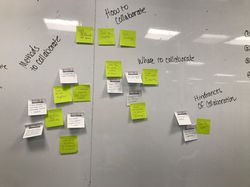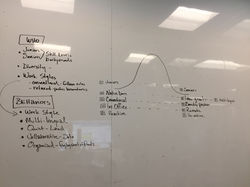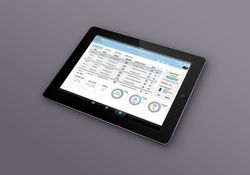
MORGAN PONSONBY
BODY OF WORK
User experience& Strategic Design
My love with user experience really started when I was in college and worked as a waitress. Even though I didn't know it at the time, I was an active player in a service journey. I always strived to give my guests the best possible experience possible by anticipating their needs and reducing areas of friction.
In my professional career I have worked with many companies to bring that human centered focus to the forefront of their products and services. I have furthered the impacts of good design through strategic user research, prototyping software and experiences, and then testing and iterating on designs. I have experience with customer facing and internal products both in desktop and mobile capacities. I strive to advocate for the importance of the design process and the benefits it renders for both the consumer and the business.
Design Proccess
"If I had an hour to solve a problem I’d spend 55 minutes thinking about the problem and 5 minutes thinking about solutions." -Albert Einstein
DISCOVER
Who is the user?
What is their daily experience, both good and bad?
DEFINE
Gather some insights about my user from my exploration
REFINE
Narrow the lens by create a problem statement
DESIGN
Wireframe in lo-fi and then iterate on the interface for a finished project
TEST
Gather info about the effectiveness of my solution by user testing
 Design Thinking Discovery |  Extremes & Lenses |
|---|
DISCOVER
The discovery phase of the process is a crucial foundation to any design thinking. In order to create a successful product I must first gather pieces of information in order to find patterns in concepts.
This can be really useful in forming both an empathetic understanding of your user, as well as the beginnings of a roadmap towards solving a problem effectively.
DEFINE
Crafting an insight about my user uses information from the discovery phase that allows me to define who exactly I am designing for and what their needs really are.
 Crafting Insites |  Insight Formula |  User Insight |
|---|
 Journey Mapping |
|---|
REFINE
Once I have a good idea of who your user is the next step is to refine my insights into a problem statement. User journey maps help identify those pain points in order to develop problem statements and visually show steak holders where in the flow needs to be improved.
DESIGN
Once I have defined your user, problem statement, requirements, then you can start the design process. Low fidelity whiteboard drawings is the best place to start. It is fast and easy to change it is also collaborative.
After whiteboard wireframes and flow charts have laid your ground work, then I move towards a digital version. I have used tools as sophisticated as Axure, Photoshop and Adobe XD.
 Lo-Fi is a good start |  Using templates |  Equipment Management Portal |
|---|---|---|
 Slalom Accelerator Prototype |
BRANDS & COMPANIES
I have been honored to work with a range of different brands and companies on a variety of different products and projects. Big or small I have found them all to be a great opportunity to learn and bring my design skills to the table.


